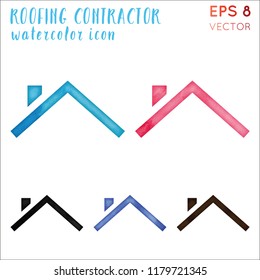Weather Considerations In Commercial Outside Paint: Important Details To Keep In Mind
Weather Considerations In Commercial Outside Paint: Important Details To Keep In Mind
Blog Article
Material Written By-MacKinnon Turan
When you're intending a commercial outside painting project, don't take too lightly the impact of weather on your results. You need to think about elements like temperature, humidity, and precipitation, as they can make or damage your paint task. As an example, did you recognize that perfect conditions ask for certain temperature varieties and humidity levels? Stopping working to monitor these elements can bring about irregular surfaces or even damages to fresh paint. Comprehending these aspects is key to accomplishing a long-lasting, expert outcome. So, what particular climate condition should you be wary of?
Temperature Considerations
When it concerns industrial exterior painting, temperature plays a critical duty in the end result of your project. If you're repainting in severe warm, the paint can dry too promptly, causing problems like bad adhesion and unequal surfaces. You intend to aim for temperature levels between 50 ° F and 85 ° F for the best outcomes. Below 50 ° F, paint might not treat appropriately, while above 85 ° F, you take the chance of blistering and splitting.
Timing your task with the appropriate temperatures is essential. Beginning restaurant interior painting in the early morning or later on in the afternoon when it's cooler, especially throughout hot months.
Likewise, take into consideration the surface area temperature level; it can be substantially more than the air temperature, especially on warm days. Use a surface area thermostat to check this before you begin.
If temperatures are unforeseeable, keep an eye on the weather forecast. Sudden temperature level decreases or heat waves can derail your strategies. You don't want to start repainting only to have the problems alter mid-project.
Humidity Degrees
Humidity levels significantly impact the success of your commercial external paint job. When the moisture is too expensive, it can hinder paint drying out and healing, causing a range of problems like poor bond and complete high quality.
If painting contractors in my area planning a task throughout damp conditions, you may discover that the paint takes longer to completely dry, which can expand your job timeline and increase costs.
Conversely, reduced humidity can also position difficulties. Paint might dry also quickly, stopping proper application and resulting in an irregular finish.
You'll intend to keep track of the humidity degrees very closely to ensure you're working within the suitable variety, normally in between 40% and 70%.
To obtain the very best outcomes, consider using a hygrometer to measure moisture prior to beginning your project.
If you locate the levels are outside the optimal range, you might require to readjust your timetable or choose paints designed for variable conditions.
Constantly consult the maker's standards for specific recommendations on moisture resistance.
Rainfall Impact
Rainfall or snow can dramatically interrupt your business external painting strategies. When rainfall happens, it can wash away newly applied paint or produce an uneven surface. Preferably, you intend to select days with dry weather condition to ensure the paint adheres properly and remedies efficiently. If you're caught in a shower, it's best to halt the job and wait for conditions to enhance.
In addition, snow can be much more harmful. Not just does it produce a wet surface, however it can additionally reduce temperatures, making it difficult for paint to completely dry. This can result in concerns like peeling or blistering down the line.
It's vital to examine the weather forecast prior to beginning your task. If rainfall or snow is forecasted, consider rescheduling.
Always bear in mind to allow ample drying time between layers, specifically if the weather condition stays unpredictable.
Conclusion
Finally, keeping an eye on the weather condition is vital for a successful business exterior paint project. By keeping track of temperature level, humidity, and precipitation, you can make sure the best problems for application and healing. Remember to intend your job around favorable weather condition and always comply with maker guidelines. With the right approach, you'll accomplish a durable, stunning surface that can withstand the aspects. Do not let the climate catch you unsuspecting-- stay notified and paint wise!
